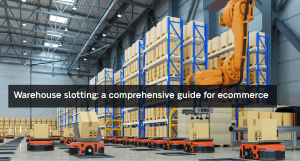Whether you have a small or large e-commerce business, the number one objective is ensuring that website visitors become customers. A high conversion rate is the best indicator that your e-commerce store is successfully engaging with its visitors. Therefore, focusing on improving your ecommerce conversion rate is essential to drive long-term growth.
What does conversion rate mean?
Conversion rate is a KPI that measures the number of website visitors who complete a purchase or desired action on your website in relation to the total number of visitors.
How do you calculate conversion rate?
To calculate conversion rate, divide the total number of purchases by the total number of website visitors, then multiply by 100 to convert to a percentage. For instance, if your site has 2,000 visitors and 40 make a purchase, your conversion rate is 2%.
Here are some effective tips to keep your visitors engaged, encouraging them to complete a purchase.
Make the checkout process as simple as possible
Too many steps that complicate the checkout process are a deterrent for customers, leading to substantial declines in conversion rates. For example, don’t force customers to create an account, as many online shoppers don’t like sharing their personal information or simply don’t want to waste time doing so. Consider offering both direct checkout as guests and account creation options so people are free to choose.
Remember, the simpler the process, the more likely a user will complete a transaction.
Tip! Show customers their order summary, allowing them to review their order before finalizing a purchase.
Provide multiple payment options
Offer a variety of payment methods to cater to different customer preferences. Not everyone trusts websites with their payment details. So, make sure you have different options available, since limited payment options increase the likelihood of cart abandonment (7%). Besides conventional payment methods like credit or debit cards, consider the following:
- Shopping apps like PayPal
- Digital wallets
- Buy now, pay later. Global buy now, pay later spending will surge by 291% by 2027.
- Cash-on-Delivery
Provide multiple shipping options
Relying on a single carrier for customer deliveries could be a significant obstacle to purchases. Why? Not everyone finds direct home delivery convenient so, think of offering pick-up location options, or even in-store collection. In this way, you will accommodate customers with different lifestyles.
Optimise delivery costs and offer free shipping
High shipping costs are the primary cause of e-commerce cart abandonment. Indeed, 3 in 5 consumers (61%) will cancel a purchase if shipping costs are too high. This information indicates that retailers should make shipping cost as clear as possible during checkout and, when possible, offer free-shipping. In fact, 80% of shoppers expect free shipping when spending a certain amount, meaning they are willing to purchase more to benefit from free shipping. Also, 66% expect free shipping on all online orders. Businesses who collaborate with 3PL companies have access to favourable shipping rates, precisely because these leverage economies of scale. This leads to significant cost savings on the long-term that retailers can invest in offering better shipping fees to their customers.
Offer environmentally-friendly delivery options
-54% of consumers would exclusively purchase from a brand offering eco-friendly delivery.
-20% stated that they are willing to pay more for green delivery.
Consumers are becoming increasingly aware of the environmental impact of their shopping habits. Collaborate with a shipping partner that offers sustainable delivery options to support your customer’s environmentally conscious behaviour.
Be transparent and provide delivery guarantees at checkout
Informing customers about the expected delivery date before they complete their purchase can significantly enhance conversion rates, even up to 35%.
This form of transparency will make customers trust your ecommerce and make them perceive your e-store as reliable.
Make your returns policy clear and offer free returns
A staggering 66% of shoppers will review an e-commerce store’s returns policy before making a purchase. Being transparent in your returns policy builds trust and confidence among your customers, and encourages purchases. Even if a customer is dissatisfied with a product, managing returns effectively and making the process as easy as possible for customers, can encourage them to buy from you again in the future. Moreover, a customer who is not 100% sure about their order, is more likely to complete a purchase online if the e-commerce’s returns policy is clear and if they offer free-returns. In fact, they will have nothing to lose if they don’t like the item. Plus, there is a 50% chance they will keep the product too. So, why not invest in offering seamless returns?
Send abandoned cart emails
Sending abandoned cart emails is an effective strategy to boost your e-commerce conversion rates. When a user adds items to their cart but doesn’t complete the purchase, it’s an opportunity to re-engage them with a personalised email. Remind them of the items they were interested in and offer discounts or incentives to encourage them to complete the transaction within a specific timeframe.




